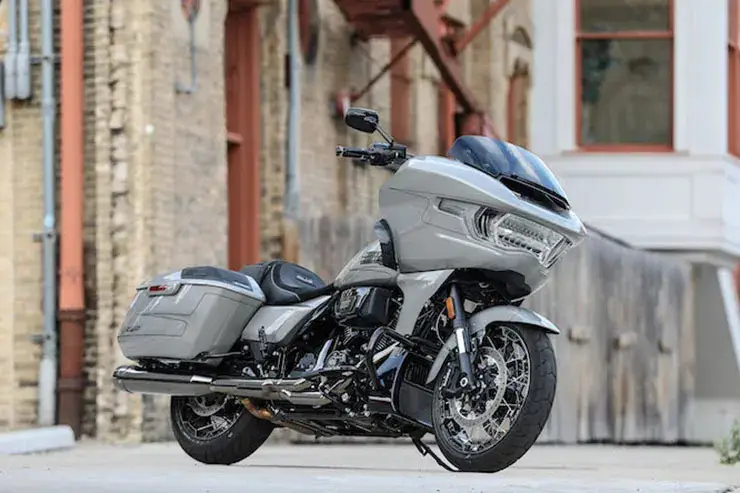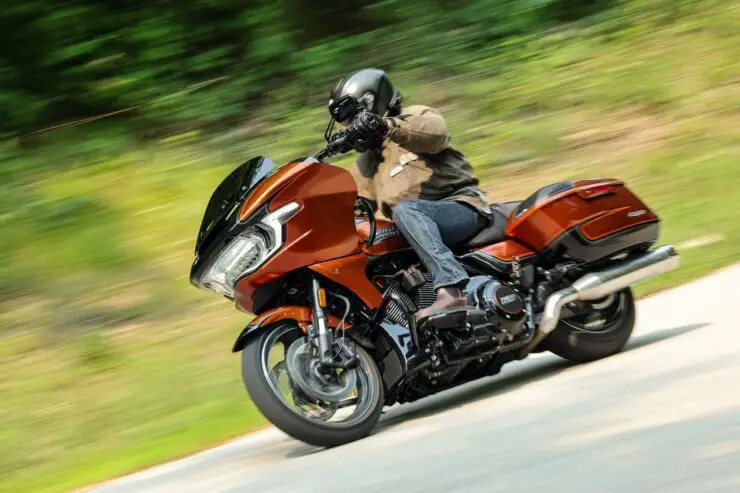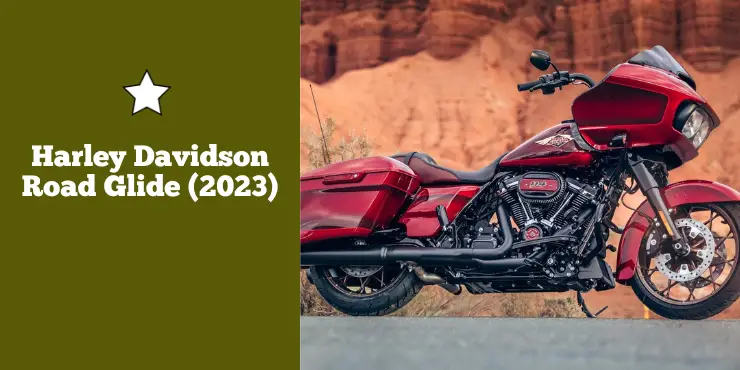When it comes to iconic motorcycles, Harley-Davidson is a name that needs no introduction. With their rich history and unmistakable design, each model holds a special place in the hearts of enthusiasts all around the world. One such model that has been making waves is the Harley-Davidson Road Glide, and the upcoming 2023 version is set to take the biking world by storm. In this article, we will explore the design, performance, comfort, features, and overall ride experience of this incredible machine. Whether you’re a seasoned rider or someone considering their first Harley, join us as we delve into the remarkable world of the Harley-Davidson Road Glide (2023). Prepare to be captivated by its striking appearance, exceptional performance, and unforgettable ride.
Harley-Davidson Road Glide (2023) – A haven for urban gliders
The Harley-Davidson Road Glide (2023) is a special motorcycle that comes with a bold, urban attitude. The bike features a snarling Milwaukee-Eight 107 cubic-inch motor and you will feel it each time you twist the throttle. The aluminum Enforcer II wheels are quite stylish and you are expected to ride the Road Glide when you want to be seen and appreciated by people passing by. Moreover, the bike’s Boom! GTS Infotainment system is an impressive addition. Further, it has numerous color options including basic black, red, and other paint options. With 2023 being the 120th anniversary of Harley-Davidson, the company has introduced the attention-grabbing 120th Anniversary Heirloom Red Fade paint and Black Finish. In fact, only 1600 models of the Road Glide Special Anniversary models have been released.
The excitement upon the launch was summed up by the words of Jochen Zeitz who was thrilled upon the launch of the Road Glide (2023).
“Since 1903, Harley-Davidson has pioneered American motorcycle design, technology, and performance, and today marks the beginning of a year-long celebration of Harley-Davidson’s 120th Anniversary,” said Jochen Zeitz, Chairman, President and CEO of Harley-Davidson.

2023 Harley-Davidson Road Glide Review
Riding the new Harley-Davidson Road Glide (2023) delivers comfort, engagement, and capability in spades. The level of the engine, chassis, and electronics refinement means that folks who may be considering a new Harley-Davidson bike should consider this in their wishlist.
The bike’s fairing features a signature look and the Road Glide has a distinctive profile. The fairing plays a key role on a touring bike as it is tasked with protecting you from the elements without trapping them in a bubble of still air. Harley-Davidson’s engineers have done their work to ensure riders have a splendid bike. This results in a new and improved aerodynamic system to address the rider’s needs at speed.
With that said, if you’re in the market for a new Harley and considering the Road Glide (2023), then you will want to learn more about it. In this review, you will be able to get in-depth information on the Harley-Davidson Road Glide (2023) and learn what this bike is all about.
Engine and performance
If displacement floats your boat, then the 2023 Road Glide’s 107 cubic-inch displacement will already have you salivating. However, you shouldn’t let the cubes dominate your ability to make decisions as these things could cloud your judgment for the V-twin punch.
The primary potential cause for disappointment is that the bike is supremely refined from the moment the throttle hand lifts the revs off idle, to the point you’re surging into the limiter at 5500 RPM, having swept through peak torque at 3000 RPM and peak power at 4500 RPM on the creamy tide of drive.
The cam profile is quite aggressive in both lift and duration whereas the 20° of cam rotation on inlet and outlet acts on a single overhead cam, delivering a total rotation at the crankshaft of 40°. This results in improved engine efficiency, delivering a boost in fuel economy. The compression ratio is quite impressive while the Y-shaped inlet tract is smoother, straighter, and more efficient, with Harley-Davidson claiming improved tumble and increased mass flow and port velocity.
What makes the difference is the new rear-cylinder prioritizing cooling system, which will route the coldest liquid directly from the radiator to the rear cylinder head before taking it to the front and back to the radiator. Harley states that the new design pushes the heat down and away from the biker, so even the slowest of forward progress will be rewarded by riding over the heat instead of basting in it.
On the move, the engine will be pleasingly flexible as it pulls cleanly in any gear, reducing the amount of gear lever dancing required to make comfortable progress. Committed overtakes benefit from a quick cog swap if you need a gap-shrinking punch. The box is quite smooth as well, allowing clutchless shifts up and down the ratio, provided that you have good feel and coordination, dropping into first from neutral with just a moderately painful clonk as opposed to the filing-loosening hammer-strike of old.
Harley-Davidson has toned down the induction roar while also boosting the size of the new exhausts for delivering both better gas flow and a richer soundtrack. Navigation is handled in multiple ways. Firstly, there is a built-in GPS software that takes care of the duties, and riders who are familiar with the Harley-Davidson Ride Planner website would be happy to know that the routes can be transferred through the Harley-Davidson App. Riders who prefer using their iPhones for local navigation due to the ease of getting directions with a single click with emails, websites, and texts would be happy to know that Apple CarPlay is fully supported as well.
| Model Name | Road Glide® |
| Year | 2023 |
| Engine Size | 1746 cc (107 ci) |
| Engine Type | Milwaukee-Eight™ 107 V Twin |
| Horsepower | Not provided |
| Torque | 150.5 Nm @ 3250 RPM |
| Dry Weight | 820 lbs (372 kg) |
| Wet Weight | 855 lbs (388 kg) |
| Length | 95.7 in (2430 mm) |
| Wheelbase | 64 in (1625 mm) |
| Ground Clearance | 5.5 in (140 mm) |
| Fuel Capacity | 6 gallons (22.7 liters) |
| Fuel Efficiency | 43 US MPG (5.5 L/100km) |
| Seat Height | 27.4 in (695 mm) |
| Price | MSRP: $21,999 |
| Cooling | Oil |
| Valve Configuration | OHV – Pushrod |
| Compression Ratio | 10.0:1 |
| Starter | Electric |
| Fuel Type | Gas |
| Fuel Requirements | Premium |
| Fuel Injector | Yes |
| Transmission Type | Manual |
| Number Of Speeds | 6 |
| Primary Drive (Rear Wheel) | Belt |
| Front Suspension Type | Telescopic Fork |
| Rear Suspension Type | Twin Sided Swing Arm |
| Front Brake Type | Dual Hydraulic Disc |
| Rear Brake Type | Hydraulic Disc |
| Anti-Lock Brakes | Optional |
| Seat Type | One-Piece |
| Number Of Seats | 2 |
Reliability and build quality
There is no doubt that Harley-Davidson bikes are bolted together these days and the fit and the finish look visually superb. There are a few American areas of crude carelessness when it comes to engineering detailing but you’ll need to look increasingly hard to find them, which means they are less overtly offensive than they previously used to be.
The standard paint job will be the Dark Platinum and a close study of several bikes on the launch will have no inconsistencies or areas of concern. The finish is deep, lustrous, and premium in quality. The Whiskey Neat paint job is done by hand by Harley-Davidson’s external paint shop collaborator, with each motorcycle taking circa 10 hours to paint, airbrush, and pinstripe by hand, which means each iteration is subtly different and unique.
Each touch point feels neatly put together and engineered, from the positive switchgear to the pleasingly positive and precise remote preload adjuster. The only element that will feel anything other than premium will be the doors of the cubby holes on each side of the fairing, which feel rather basic.
Shapely bodywork
While the bike’s fairing gives bikes their signature look, the Harley-Davidson Road Glide (2023) has distinctive profiles and it plays a significant role on a touring bike, which is tasked with protecting the biker from elements without trapping them in a bubble of still air.
Key to this approach is what Harley refers to as a floating windshield, with a large space below to promote a laminar airflow. This result in the company’s “subjective” wind tunnel analysis will be a 60 percent reduction in helmet buffeting. Moreover, there is also an adjustable vent that can direct the airflow up or down for fine-tuning it to account for different heights or direct cooling air at the rider. Aside from such benefits, the vent will also minimize the low-pressure zone behind the fairing, which may make the rider feel as if they’re getting pushed forward from behind. The lower body is accounted for with adjustable vanes on the edges of the Road Glide fairing. On the ride, it’ll prove to be useful for directing air toward your legs and lower torso. When combined with the cooler-running rear cylinder, the Road Glide’s cockpits are significantly cooler when you wish them to be.
Even though the Road Glide’s distinct profile remains recognizable, it has been updated thoroughly. New signature lighting informs cognoscenti of which motorcycle is approaching, and the old, stalk-mounted turn signals are swapped for LED signals that are built into the fairing for a more modern and attention-getting look.
Ride quality and brakes
While almost every area of the Harley-Davidson Road Glide (2023) represents a step forward for the line, there is no doubt that the ride quality and brakes are the standout departments of improvement.
Harley-Davidson bikes have often struggled to manage their own mass well and the refinement on offer from the suspension can lead to a crashy ride of slapping forks and bump-stop-bothering rear shocks. While country roads are rewarding enough if you’re able to tolerate the wallow, chucking a few sharp bumps and typical potholes into the equation may have you looking for a chiropractor’s number.
Luckily, the story would not be more different with the Harley-Davidson Road Glide (2023). The 47mm diameter Showa forks are able to soak up poor road surfaces with aplomb such that you’ll never feel like the springs will be ejected from the fork tops and even the sharp bumps mid-corner will be despatched without the hop, skip, and heart-in-mouth thud of old. There is 117mm of travel on offer and even on rough roads, they are able to soak up pretty much everything. Further, the reduction in mass of the yolks will take a decent chunk of the top-heaviness out of the front end.
As the rear end of the bike sits a pair of Showa shocks, one of them boasting a default preload setting whereas the nearside shock has a preload adjuster with five main marked settings. The remote adjuster is within reach when riding, which means you’ll be able to make adjustments on the fly without needing to pull kerbside.
The cornering composure is impressive as well. The reduction in mass can be felt in direction changes, especially as most of it seems to have come out of the top of the motorcycle. It takes little effort to flick the new Road Glide through direction changes and tipping into corners is a real pleasure, aided by the wide bars and thin tire profiles. The rim size delivers a great balance of stability and agility, resulting in a neutral feeling ride.
Braking is delivered by openly branded Brembo hardware, with the front disc size growing to 320mm. Meanwhile, the twin discs are gripped by 32mm four-piston Brembo radial monoblock calipers. The front brake lever is span adjustable, allowing various lengths of digit to deliver optimal pulling power. Power will be decent, certainly enough to haul the bike from high speeds with ample composure.
Adding the rear brake to the situation, which is a 300mm disc with a 4-piston Brembo caliper, will deliver a dramatically tangible difference to the braking capability on offer. Meanwhile, the car-size footbrake pedal will deliver meaty braking force while also providing deft control for slow-speed riding.

All-new infotainment
With the new Harley-Davidson Road Glide (2023), Harley has introduced the Skyline OS. On the inside of the revamped fairings is a 12.3-inch diagonal TFT that offers 90% more viewing space than the Boom! Box GTS screen. Naturally, the screen is touch-sensitive and will work well with gloves.
The impressively wide TFT doesn’t just take center stage but the entire stage. The analog dials of last year are no longer present. The design of the instrumentation of the screen, with big and analog-looking tachometer and speedometer, feels instantly familiar to Harley touring bike owners. In between the dials will be a map or an info screen. Harley-Davidson has also included a couple of other, less traditional screens highlighting different information on different asks.

